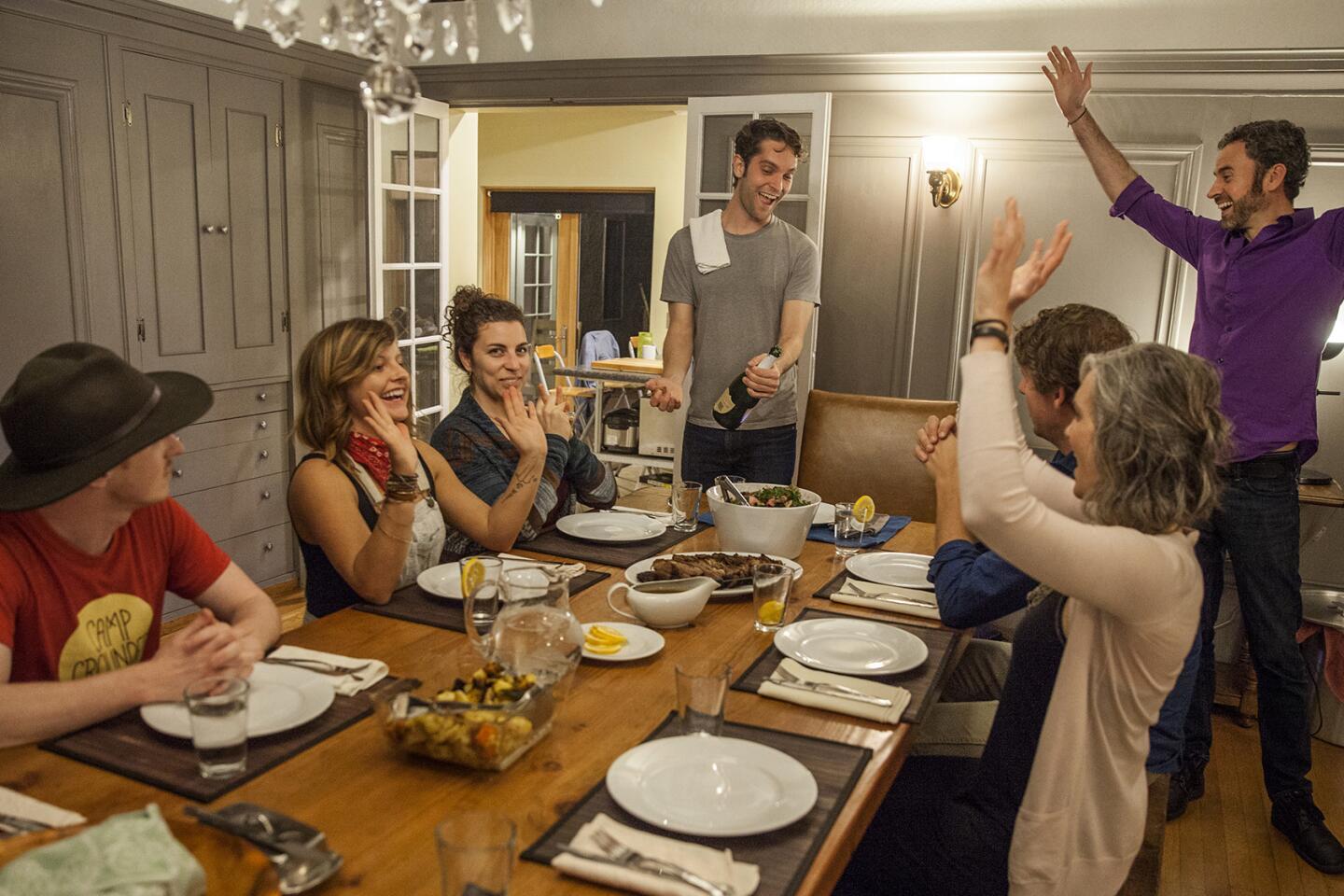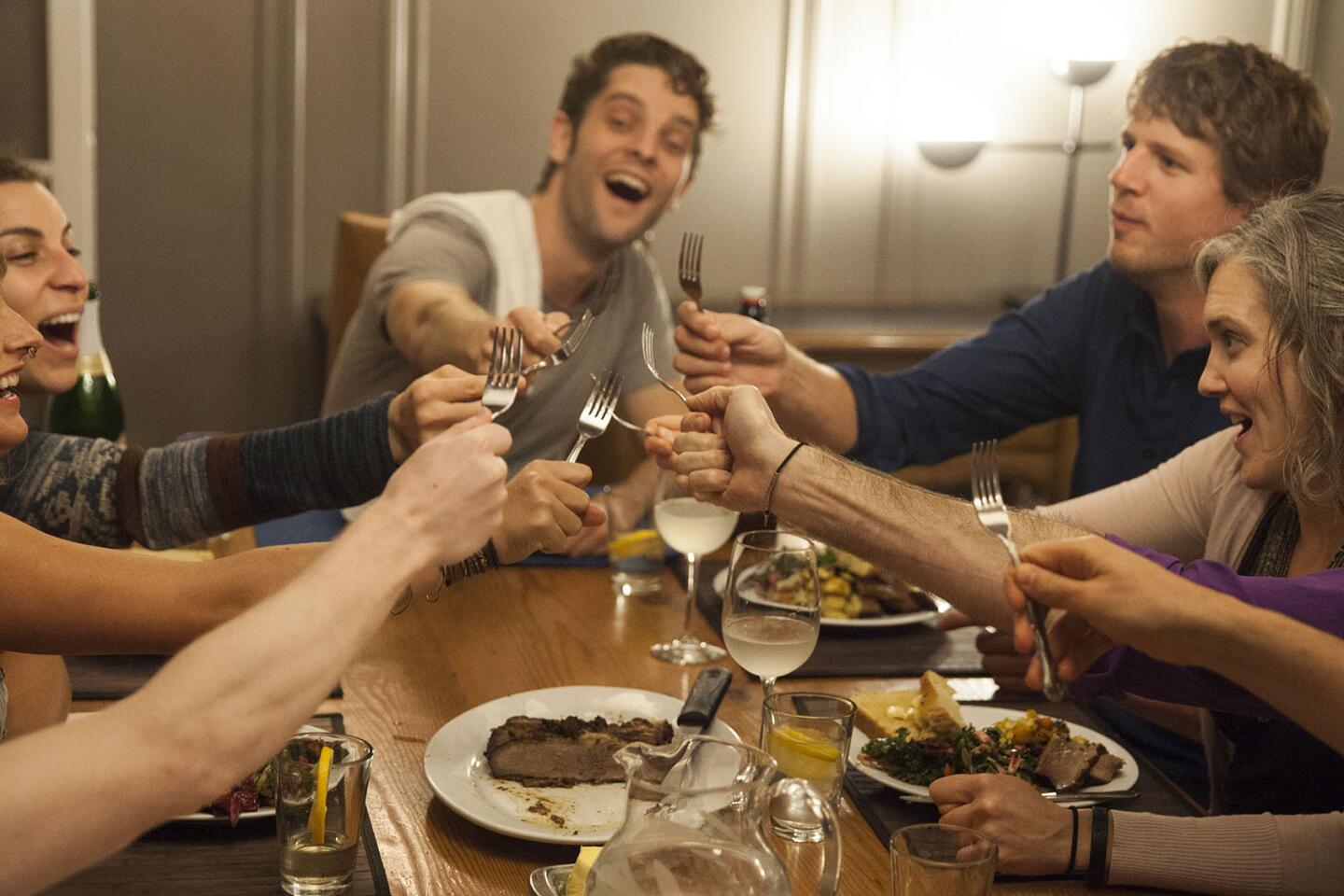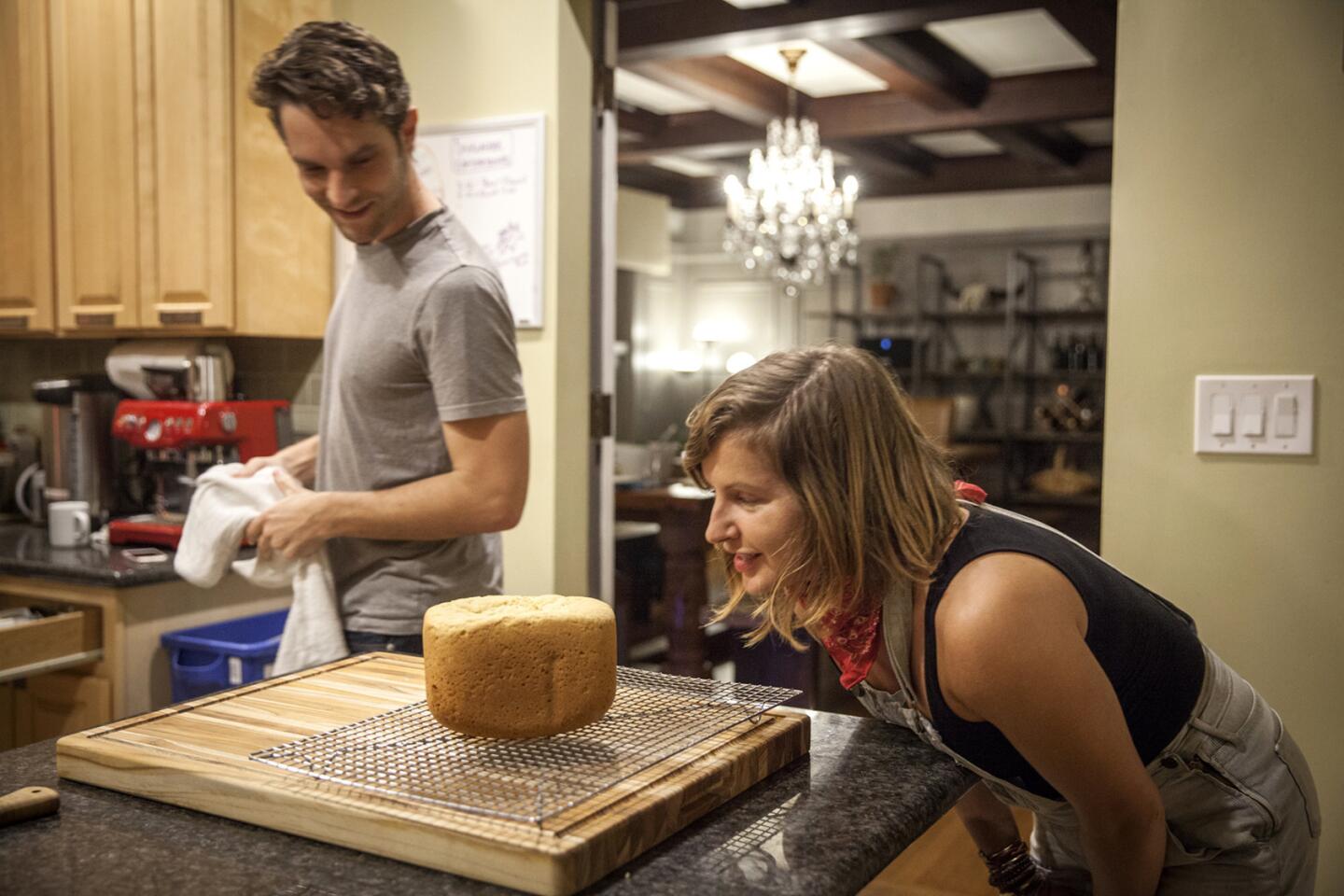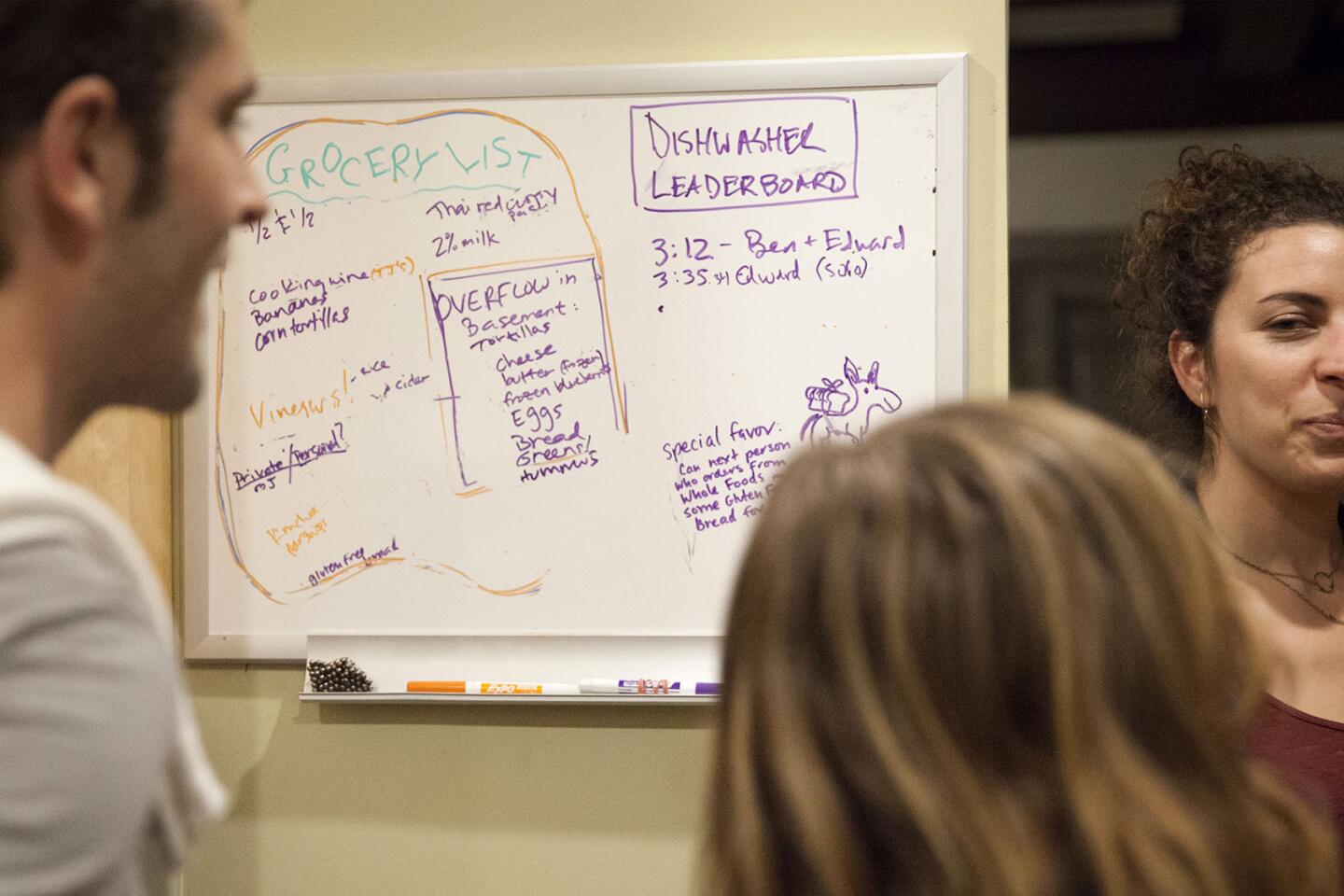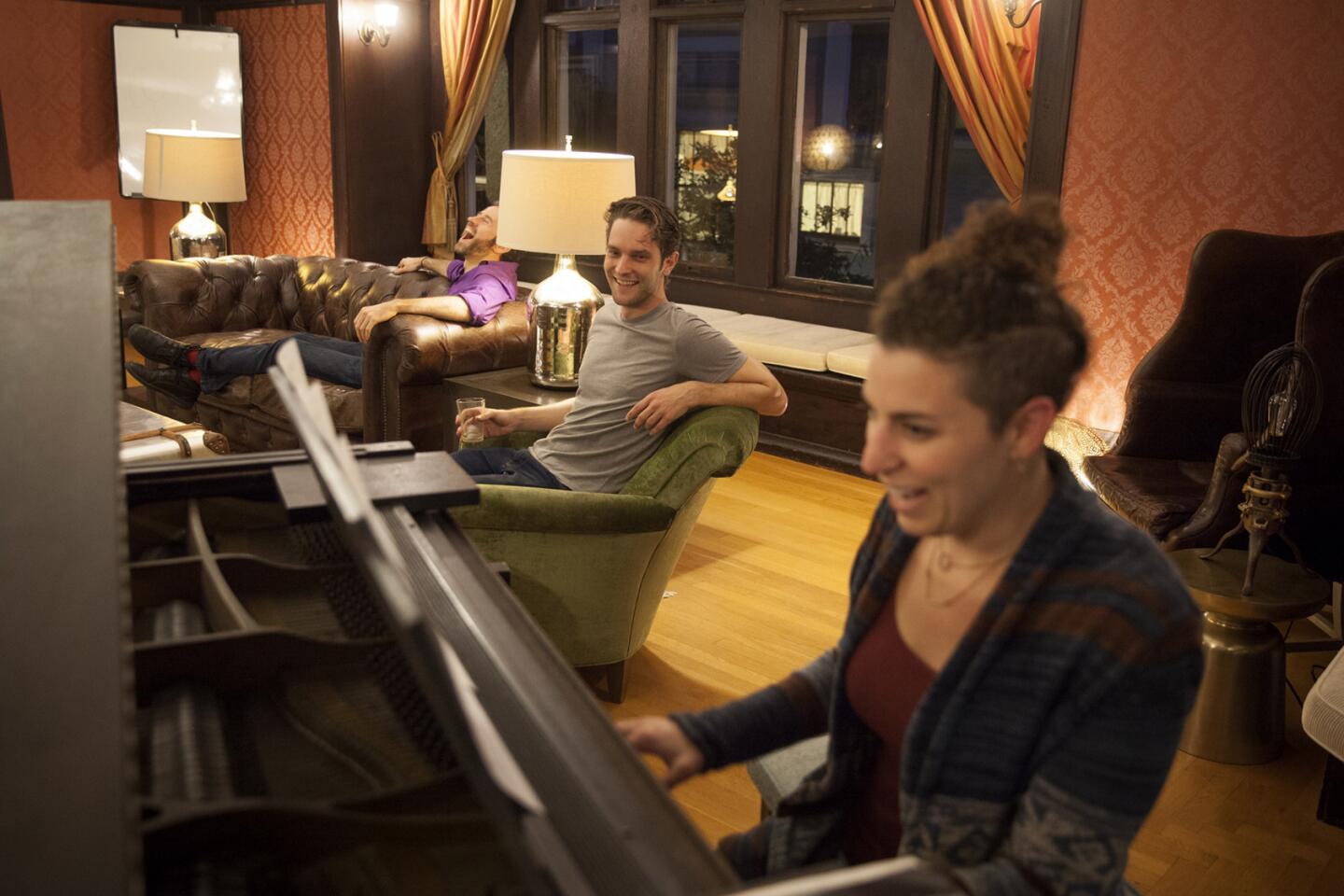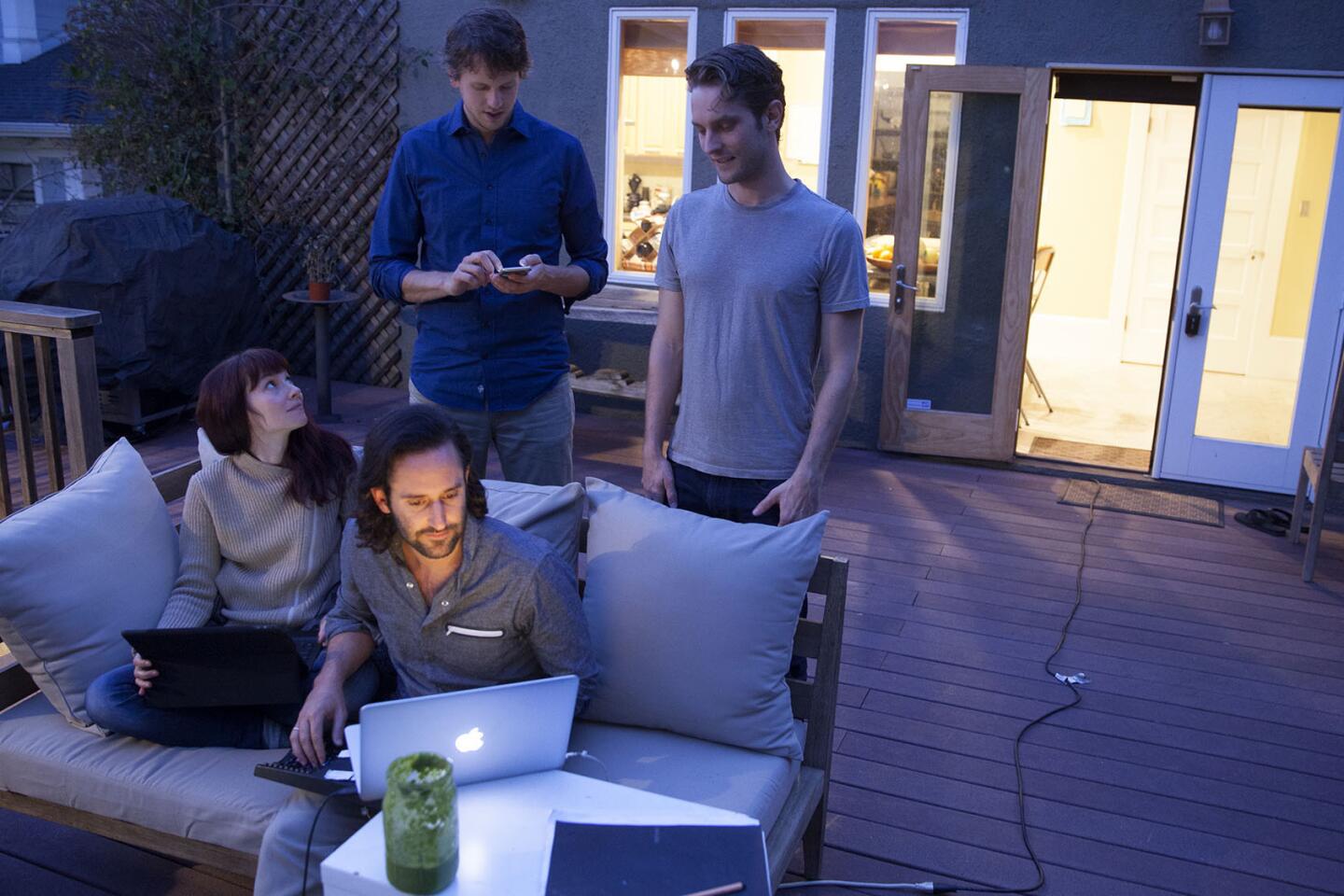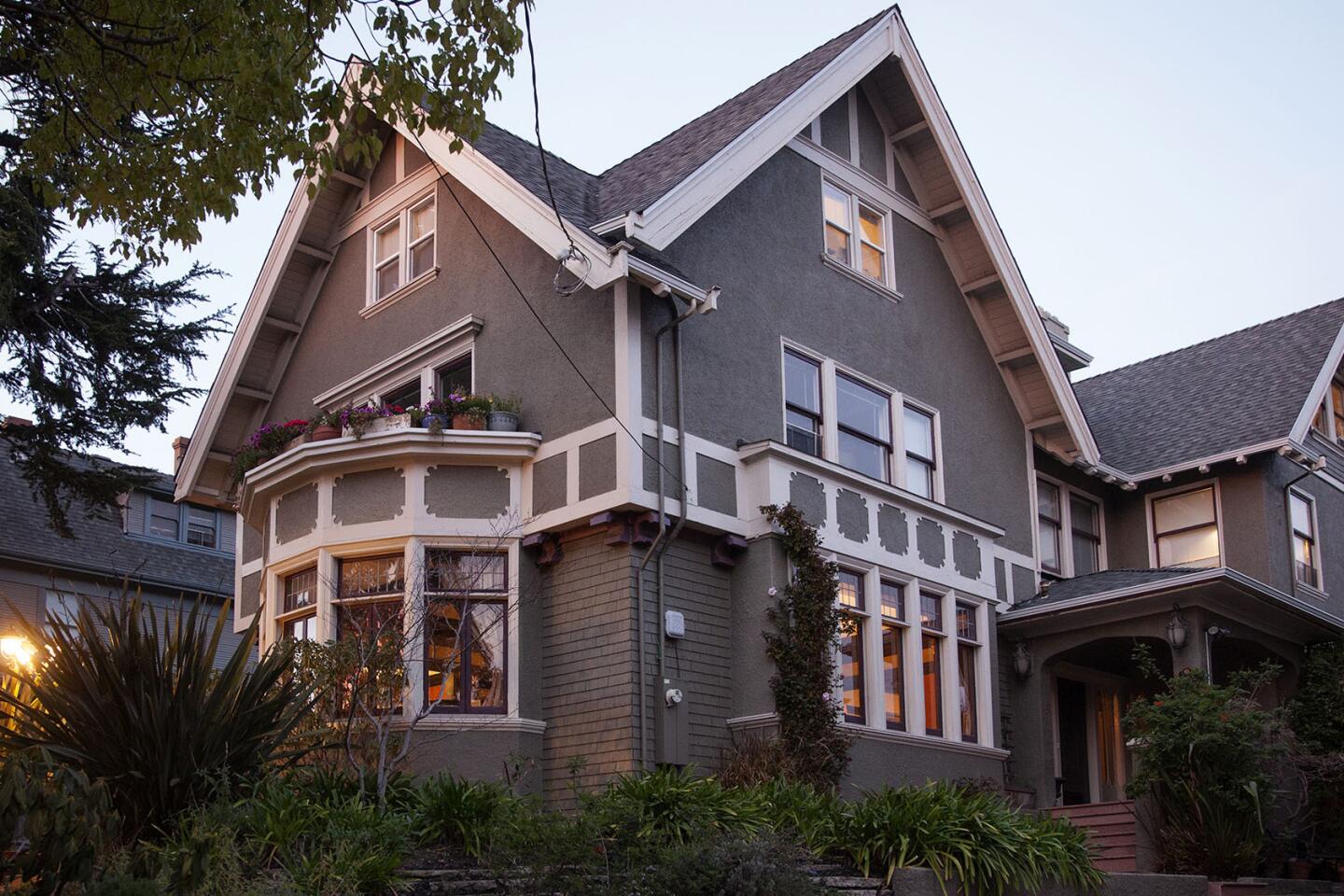Think you have too many roommates? People with 16 are paying extra for the privilege
- Share via
reporting from Oakland — Jay Standish showed off a three-story house in the leafy neighborhood of Adams Point, pausing at the home’s top-floor kitchen.
“That’s the second kitchen,” he said, motioning toward the refrigerator, stove-top, sink and toaster ovens. “It’s good for when there’s high traffic in the downstairs kitchen, or, you know,” he shrugged, “if you’re not in a mood to be social.”
Standish, 31, lives here with 10 other people. The house, called Euclid Manor, isn’t a college dorm. It’s not a hostel-style “hacker house” either. According to Standish, this isn’t a tech thing, or a hippie thing, or a rent-is-too-expensive-and-I’m-desperate thing.
It’s called co-living, and it’s a lifestyle choice emerging among young people who favor Airbnb over hotels and Lyft rides over car ownership. Rather than seeking out housemates on Craigslist, city-dwellers in high-cost markets such as the Bay Area and New York City are now paying companies — some small and others, like WeWork, backed by millions in venture capital — a premium to live in a building with a curated roster of housemates, stocked kitchens and planned get-togethers.
It’s about building a community, Standish said. And for him, it’s also about building a business.
Standish and Ben Provan, 32, run OpenDoor, which manages Euclid Manor and two other properties: the Canopy, also in Oakland, where 12 people live, and the Farmhouse in Berkeley, which 16 call home.
The pair see themselves as more than landlords. Though they handle house repairs and rent collection, they also vet tenants to make sure that there’s a balanced mix of personality types in the house, maintain the culture of the houses, help run activities and act as mediators when needed.
“Humans are very social beings and pre-Industrial Revolution we lived in large groups,” Standish said while showing off Euclid Manor’s dining room, which has a long, banquet-length table used for house meetings and dinner parties. “I mean, this house is an interesting example of that. It was built in 1910, and back then you’d have these huge estates where there were 20 people living in a house together,” though many were live-in servants. (A “totally different dynamic,” he said).
But Standish thinks that many people, particularly millennials, are eschewing the American dream of owning a house in favor of finding a second family of like-minded people.
See more of our top stories on Facebook >>
Research from real estate site Trulia found that homeownership in the millennial age group is the lowest it has ever been. Around 70% of people age 18-34 in the U.S. rent. Trulia’s chief economist, Ralph McLaughlin, said that is in part because in places such as the Bay Area, New York and Southern California, the median buyer would have to spend upward of 60% to 70% of his or her monthly income to buy a house.
The rise of co-living is a response to both escalating real estate costs and growing demand from people actively seeking such housing and willing to pay for it, McLaughlin said.
Research conducted in 2015 by British life insurance firm Beagle Street found that more adults than ever are waiting to move out of their parents’ house, get married and have children. It’s not just because it’s economically harder, the research showed. Survey respondents also indicated that they don’t value living alone as much as earlier generations.
“The best way to describe the mentality that encapsulates where we’re at is the ‘modern nomad,’” said Benja Juster, 28, an interactive experience designer who lives in the Canopy, whose residents are all in their mid-20s to mid-30s. “It’s a desire to not be locked down to one physical location … to go with the wind and find where life may take you.”
Ariana Campellone, 24, a nutrition and herbalism practitioner who also lives in the Canopy, said “traditional” adult responsibilities such as family planning aren’t a priority for her right now, and she much prefers to live with others who can help her grow.
“Our values here are creative empowerment and skill-share,” she said.
OpenDoor vets tenants beyond the usual credit history checks. Applicants have to answer questions such as what they could contribute to the house, what kind of environment they’re looking for, and if they were a non-human animal, what kind would they be.
“I said I was a raccoon,” Juster said. “I make do with scraps. I’m very resourceful and nimble.”
OpenDoor is testing a different ownership structure for each of its houses to see what works best. It rents the Farmhouse, its first business venture, and subleases it to tenants. It bought its second house, the Canopy, outright. OpenDoor operates the investor-owned Euclid Manor.
The company’s revenue comes from the rent it collects from tenants, usually $1,000 to $1,200 a month, depending on the room and house. Standish and Provan declined to reveal OpenDoor’s margins, but said the properties are profitable, and co-living provides better returns than traditional housing. For tenants, the rent is more expensive than sharing a home with 10 or so roommates, but comparable to living with fewer housemates in the same neighborhood.
Aside from the food program, which lowers the cost of groceries, Standish and Provan said residents also get access to appliances and facilities uncommon in shared apartments — at Euclid Manor those include West Elm furnishings, a grand piano, a Vitamix and a cafe-grade coffee machine. The Canopy has a soundstage, a woodworking studio, and large living rooms with projectors and musical instruments.
But what tenants are really paying for is the “community,” Standish said. “Living as family, basically.”
SIGN UP for the free California Inc. business newsletter >>
In New York City, a co-living business called Common has raised $7.35 million in venture capital funding to open two buildings in Brooklyn, with a third planned for this spring. Founded by serial entrepreneur Brad Hargreaves, the start-up holds master leases on its buildings and also plays a property management role.
Its apartments are fully furnished and stocked with items such as toilet paper and paper towels. Tenants share apartments within the building and have access to common areas. They communicate using the group messaging app Slack, and Common organizes building-wide activities like movie nights, yoga, breakfasts and dinners.
WeWork, the $16-billion start-up that has raised more than $1 billion in venture capital funding and leases co-working spaces in Los Angeles, San Francisco and New York, is also dipping its toes into co-living. Its building in New York City has 45 units, a mix of studios and one- and two-bedrooms, with communal events such as potluck dinners and fitness classes. It doesn’t own any real estate, opting instead to lease entire buildings.
Despite soaring rents in places where co-living companies have set up shop, these ventures can still be risky, according to real estate experts, especially if they try to expand too fast.
The best-known co-living failure is the venture capital-backed Campus, a San Francisco start-up that launched in 2013. Within two years it had 30 houses on master leases. But the company shut down last August because it was “unable to find a way to make Campus into an economically viable business,” founder Tom Currier said in an email to tenants. Currier could not be reached for comment.
It’s a mistake to think that the speediness that works for tech start-ups will also work for a real estate start-up, said Michael Yarne, a partner at San Francisco development firm Build Inc.
“The venture capital world is obsessed with speed and scale, but the world we’re in goes really damn slow,” Yarne said.
The slow return on real estate properties hasn’t put off investors with cash, though. Venture capital firm Maveron Ventures invested in Common because it believes that companies like Common fill a need.
“What we’re looking for are big industries where consumers, and especially millennial consumers, feel disconnected from the brands that exist,” said Jason Stoffer, a partner at the firm.
Millennials “expect a level of authenticity,” he said, “and the reality is an Avalon Bay apartment building is sterile. It’s not authentic. You don’t know your neighbors. People want a level of responsibility and a brand which has a soul.”
For Standish and Provan, co-living houses are the first step. But why stop there? The pair have a long-term vision of creating sustainable communities in different formats — maybe one for families too.
But first, they’re focusing on the three houses they have. And answering age-old questions of communal living, like who’s going to do the dishes.
“Well, if we can’t figure that one out, how are we going to solve climate change and economic inequality?” Standish laughs. “So let’s start with the dishes.”
Twitter: @traceylien
MORE FROM TECHNOLOGY
Silicon Valley Comic Con comes with an extra dose of tech
Apple turns to Google for help storing some iCloud accounts
Snapchat hires Pandora veteran as vice president of product
